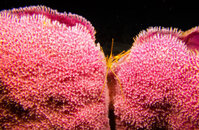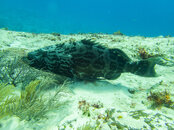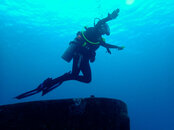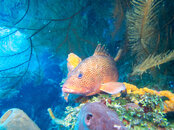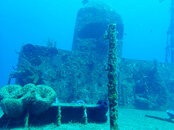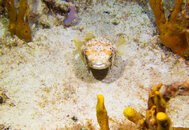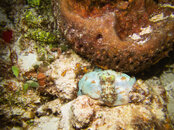So I am by now means an expert in underwater photography, I have really just started taking my camera underwater, but I do know topside photography fairly well. So, take what I say under that frame. There are actually two different things here. First is getting white balance, second is getting exposure.
First exposure since it is the hard one.
Modern day cameras are really good at computing and guessing what the settings should be, this is Auto or Program mode, the problem is that light underwater works so different than above water that underwater the camera isn't as good at figuring out. Unless you are in manual mode the camera is taking the variable you decide (say appeture) and then deciding all the other variables based on this (adjusting ISO and Shutter Speed) to get what it thinks should be a correctly exposed photograph. Now again in general a camera is pretty good at figuring this out, but there are times when this doesn't work. (A classic example of this above water is snow, where the camera underexposes and the snow looks grey).
So unless you are shooting in manual mode you are not likely to get consistently exposed images, in some sense you are correcting for this by using video lights and providing light up close that the camera is able to use to get a good exposure. But what you will want to do if shooting in appeture priority mode or shutter priority mode is use exposure compensation to adjust for the correct exposure to get the blue water the way you want. Or even better shoot in manual mode.
You can particularly see the difficulty here in the photo of the diver set against the sun. The highlights (bright area) of the sun is a bit washed out and the shadows (dark area at bottom) aren't clear. If it were me, I would actually stop down the camera and underexpose this shot (either in manual mode with a smaller appeture or exposure compensate for lower) and then in post bring up the shadows and add in contrast.
White Balance:
Easy. Shoot in raw, set the white balance in post. The disadvantage of this is the jpgs the camera records (the files I assume you uploaded here) are probably not white balanced, but don't worry about it, get the RAWs into a photo editor, set the white balance and the colors will come out. The real problem comes with lights that have one temperature and the the ambient light which will be another.
Two resources that should really help:
Get Martin Edge's Underwater photography.
And second try out this tool which will help learn how to adjust setting to get exposure you want:
Get the Perfect Shot with Canon



